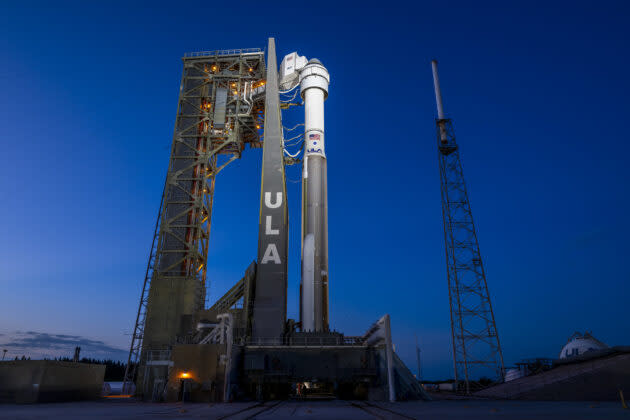
The countdown is on for the first crewed flight of Boeing’s Starliner space taxi, which comes after years of setbacks and $1.5 billion in cost overruns.
Liftoff is set for 10:34 p.m. ET (7:34 p.m. PT) today from Cape Canaveral Space Force Station’s Space Launch Complex 41 in Florida. NASA and Boeing are streaming video coverage of the countdown and Starliner’s launch atop a United Launch Alliance Atlas V rocket.
This will be the first time astronauts have been sent into orbit from a pad at the military launch facility — as opposed to NASA’s Kennedy Space Center nearby — since Apollo 7 in 1968. It’ll also be the first crewed launch on an Atlas rocket since the Mercury missions of the 1960s.
This mission will be nothing like anything NASA might have planned in the ’60s. Veteran NASA astronauts Butch Wilmore and Sunita Williams are going to the International Space Station for what’s basically a shakedown cruise in the gumdrop-shaped Starliner spacecraft.
“We have a lot to do — test it out, make sure it’s ready to go and make sure we can bring it back so more people can fly on it in the future,” Williams said in a pre-launch video clip from NASA.
NASA chose Boeing and SpaceX to transport astronauts to and from the space station a decade ago, in the wake of the space shuttle fleet’s retirement in 2011. The companies’ development costs were covered by fixed-price contracts worth $4.2 billion for Boeing and $2.6 billion for SpaceX.
Both companies encountered challenges as they built and tested their spacecraft. SpaceX’s Crew Dragon entered service first. Crew Dragon Endeavour carried its first astronauts to the space station in 2020, and since then, Dragons have flown eight crews for NASA without a hitch. Boeing’s CST-100 Starliner, however, met with a series of failures during an uncrewed test mission in 2019. It took years to resolve all the glitches and safety lapses.
A re-do of the uncrewed flight test in 2022 set the stage for today’s crewed flight — but NASA’s contract terms required Boeing to cover $1.5 billion in extra expenses.
Wilmore and Williams are expected to arrive at the space station on Wednesday and spend about a week doing orbital checkouts of the reusable Starliner craft. Their spaceship has been christened Calypso in honor of the late ocean explorer Jacques-Yves Cousteau’s famous research ship.
At the end of the mission, they’ll ride Calypso back down to a parachute-assisted, airbag-cushioned touchdown in New Mexico or elsewhere in the western U.S., with the exact timing and location to be determined based on weather.
Assuming all goes well during the demonstration mission, Boeing’s Starliner will join the rotation with SpaceX’s Crew Dragon for ferrying astronauts to the space station every six months or so. Although just two astronauts are on board for this test mission, Starliner is designed to carry up to seven spacefliers.
Having two types of commercial space taxis, plus Russia’s Soyuz spacecraft, will significantly boost the ability to get to the space station and back. “Multiple providers provide you redundancy,” Wilmore explained.
And it’s not just about the International Space Station, which is due to go out of service in the early 2030s. Boeing and its Starliner space taxis are part of the team working on Orbital Reef, a commercial space station project that’s led by Sierra Space and Jeff Bezos’ Blue Origin space venture. Boeing also partnered with Space Adventures years ago on a plan to send customers into orbit on a commercial basis.
